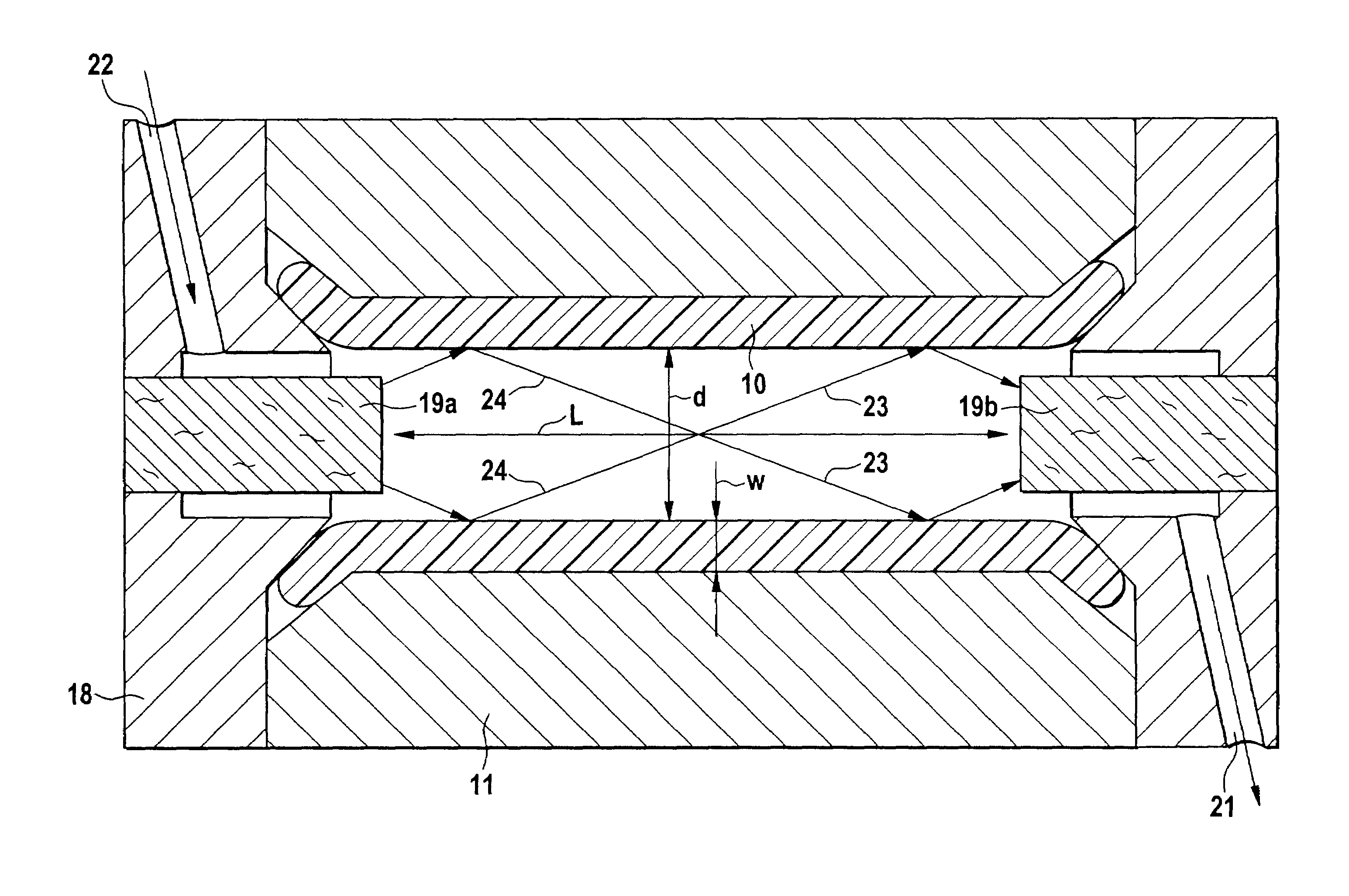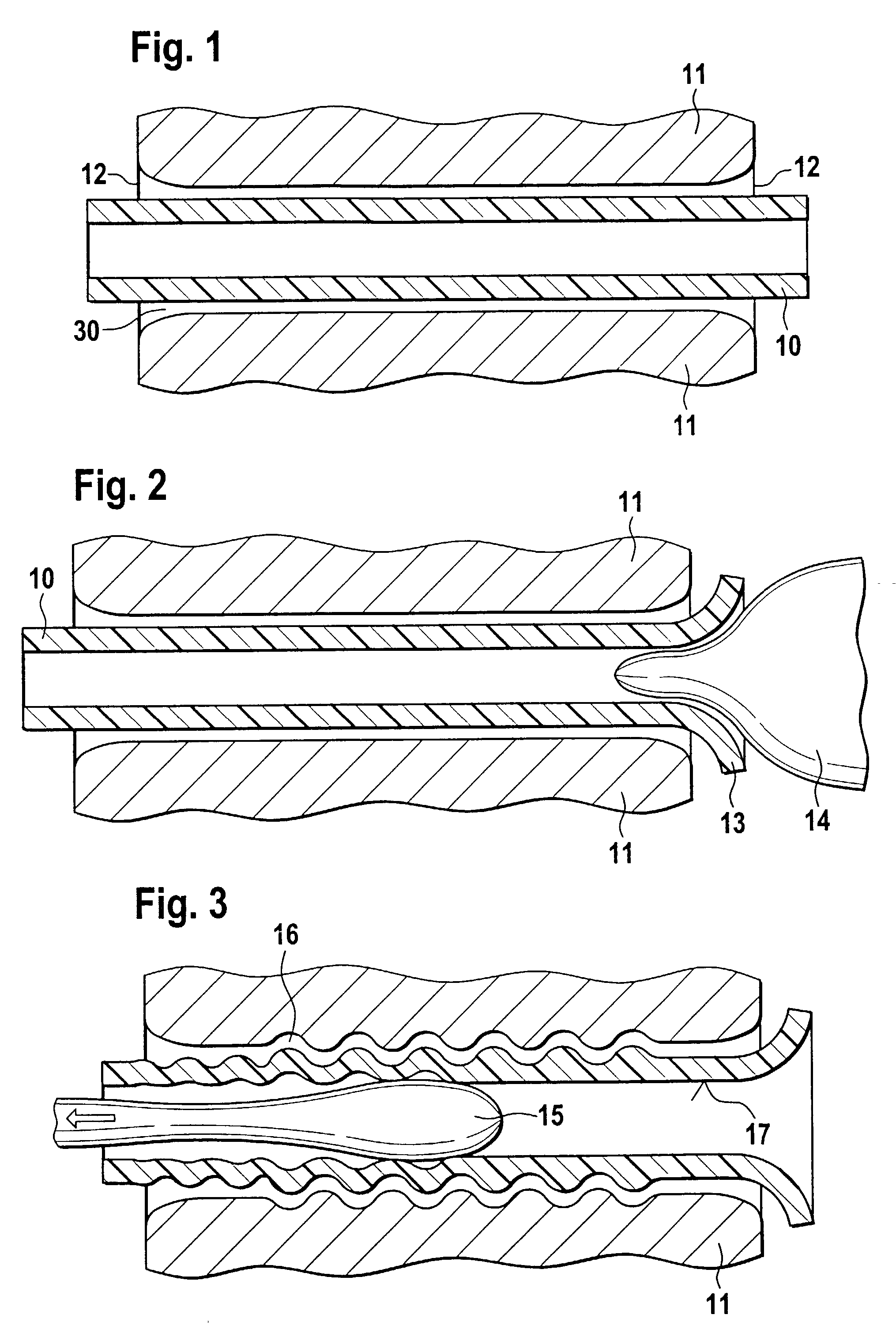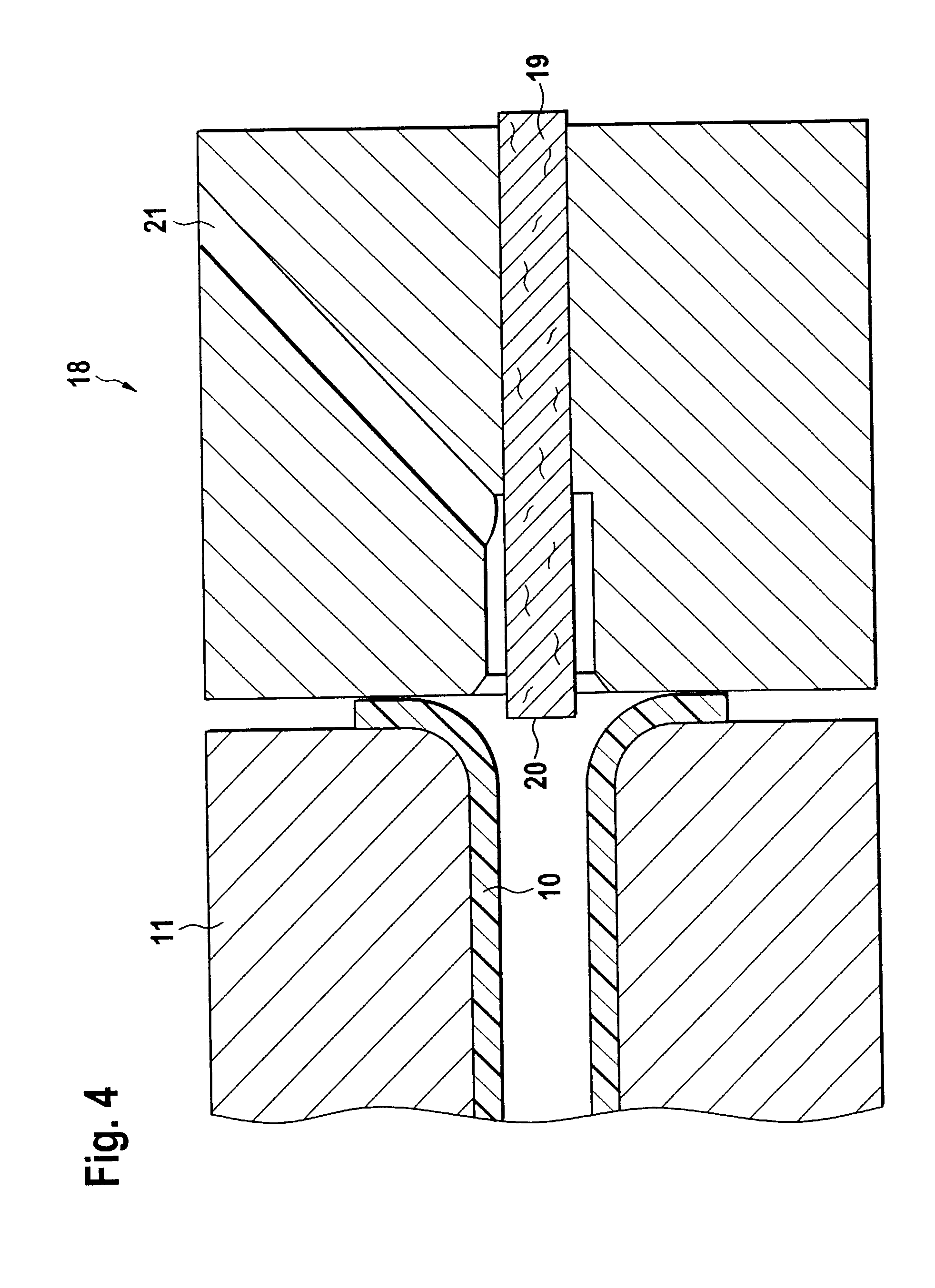Method for manufacturing a flow cell
a flow cell and manufacturing technology, applied in the direction of manufacturing tools, surface layering apparatus, instruments, etc., can solve the problems of reducing the light conductivity value, increasing noise, and limiting the detection limi
- Summary
- Abstract
- Description
- Claims
- Application Information
AI Technical Summary
Benefits of technology
Problems solved by technology
Method used
Image
Examples
Embodiment Construction
[0019]As shown in FIG. 1, a tube 10 of Teflon AF is pushed into a cylindrical bore 30 of a cell housing 11. The housing 11 typically is a steel capillary and has machined end regions 12. The inner diameter of the housing, i. The diameter of the bore 30, is slightly larger than the outer diameter of the tube 10 such that it is just possible to insert the tube. Extruded Teflon AF tubes are available as semi-finished products from DuPont with an inner diameter of about 0.5 mm and an outer diameter of about 0.7 mm. The tube 10 projects from both ends of the housing 11 by about the same amount.
[0020]The housing 11 and one end of the projecting tube 10 are fixed with a special device (not shown). Then, as shown in FIG. 2, a heated stamping tool 14 is used to form the other end of the tube to a trumpet or funnel shape 13. During this forming step the housing 11 serves as support, wherein the end regions 12 of the housing have the desired trumpet shape.
[0021]In the next step, illustrated in...
PUM
| Property | Measurement | Unit |
|---|---|---|
| outer diameter | aaaaa | aaaaa |
| outer diameter | aaaaa | aaaaa |
| thicknesses | aaaaa | aaaaa |
Abstract
Description
Claims
Application Information
 Login to View More
Login to View More - R&D
- Intellectual Property
- Life Sciences
- Materials
- Tech Scout
- Unparalleled Data Quality
- Higher Quality Content
- 60% Fewer Hallucinations
Browse by: Latest US Patents, China's latest patents, Technical Efficacy Thesaurus, Application Domain, Technology Topic, Popular Technical Reports.
© 2025 PatSnap. All rights reserved.Legal|Privacy policy|Modern Slavery Act Transparency Statement|Sitemap|About US| Contact US: help@patsnap.com



